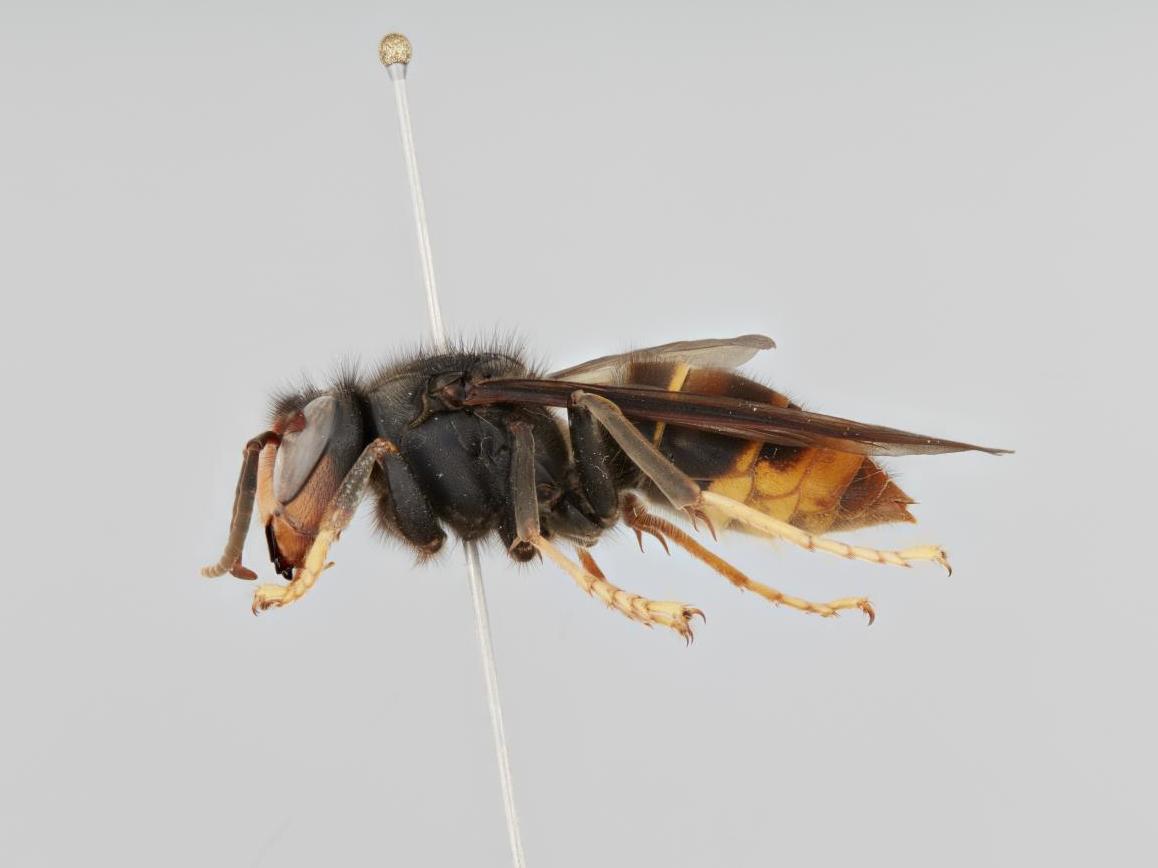Asian hornet invasion spreads to northern Germany, posing major threat to European bees
Species already has foot-hold in Europe and is now spreading north

Your support helps us to tell the story
From reproductive rights to climate change to Big Tech, The Independent is on the ground when the story is developing. Whether it's investigating the financials of Elon Musk's pro-Trump PAC or producing our latest documentary, 'The A Word', which shines a light on the American women fighting for reproductive rights, we know how important it is to parse out the facts from the messaging.
At such a critical moment in US history, we need reporters on the ground. Your donation allows us to keep sending journalists to speak to both sides of the story.
The Independent is trusted by Americans across the entire political spectrum. And unlike many other quality news outlets, we choose not to lock Americans out of our reporting and analysis with paywalls. We believe quality journalism should be available to everyone, paid for by those who can afford it.
Your support makes all the difference.Bees in Europe are struggling. Some species are already disappearing at rates “consistent with a mass extinction”, due to the climate crisis and other human impacts.
But there is now another major threat to bees’ survival in Europe: killer hornets.
In early September 2019, an Asian hornet (Vespa velutina nigrithorax) was collected alive in Hamburg, Germany (the city has roughly the same latitude as Manchester in the UK).
The find represents the northernmost range of this invasive species so far in Europe and indicates it is spreading further north.
New research by a research group from Hamburg, which also serves to update the occurrence of the dangerous insect, has been published in the open access journal Evolutionary Systematics.
The Asian hornet is known to prey on many insects, including honeybees and other beneficiary species, has already invaded some parts of southern and central Europe, and is regarded as a potential threat to apiculture and even to ecosystems, scientists said.
Bees are vital pollinators for fruit, vegetables and non-domesticated plants. It is estimated that a third of all the food that we eat depends on pollination mainly by bees.
“Invasive species represent one of the big challenges in a globalised world as they more easily reach new habitats, may change local diversity patterns and often pose threats to native species and economy,” the authors said.
The Asian hornet specimen found in Europe was recorded in south-western France in 2005 and the species started to spread quickly. Over the next few years, it invaded large parts of France and regions of Spain, Portugal, Belgium, Italy, the Netherlands, southern parts of Great Britain and south-western areas in Germany.
The estimated invasion speed for France was estimated at around 78 km/year, but in reality, the spread might be occurring much faster due to human factors.
The research team said it is not yet clear if the collected Asian hornet belonged to an already settled population or if it’s the first record of a new invasion.
“Considering the fast invasion speed of the species and its relatively high climatic tolerance, it’s quite possible that it had reached Hamburg on natural routes and now reproduces there,” the scientists said.
Even though other models suggest the Hamburg area is not suitable for the species today, the new find might be a sign the Asian hornet has begun spreading at a speed above that previously known and even in climatically less favourable regions.
“The current find needs to be taken seriously, no matter if it is only a single specimen or a member of an established population”, said lead researcher Martin Husemann of the University of Hamburg.
Insects are in crisis around the world. More than 40 per cent of insect species are declining and a third are endangered.
Their loss threatens a “catastrophic collapse of nature’s ecosystems”, according to a major international study published last year.
Join our commenting forum
Join thought-provoking conversations, follow other Independent readers and see their replies
Comments